The Soyuz spacecraft is now considered a reliable means of transporting people into Earth’s orbit. Even in the event of a catastrophe, the rocket’s emergency rescue system ensures the crew’s survival.
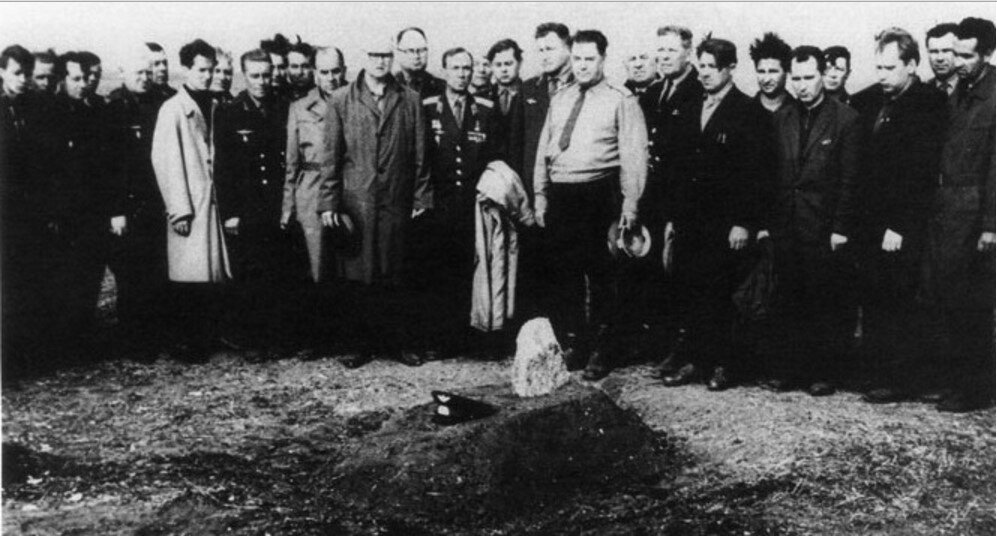
But, as is well known, all instructions and safety rules in technology are written in blood. The Soyuz is no exception. In this article, we will discuss two disasters that occurred at the beginning of this spacecraft’s operation and claimed the lives of four Soviet cosmonauts.
Victims of the Moon Race
The second half of the 1960s was marked by the Moon race. The USSR joined this race with a significant delay and desperately tried to catch up with the Americans. A new spacecraft could help in achieving this goal. One of its modifications (7K-L1) was planned to be used in the manned Moon flyby project, while the rest (7K-LOK) was intended for missions involving direct landings on the surface of our natural satellite.
The situation was complicated by the fact that after the termination of manned flights under the Voskhod program in 1965, the USSR lost the ability to send people into space for several years. However, to reach the Moon, it was necessary to gain important experience in spacecraft docking and astronaut transfers between them. Therefore, another version of the new spacecraft was developed — 7K-OK. It was designed for flights into Earth’s orbit and could accommodate three people.
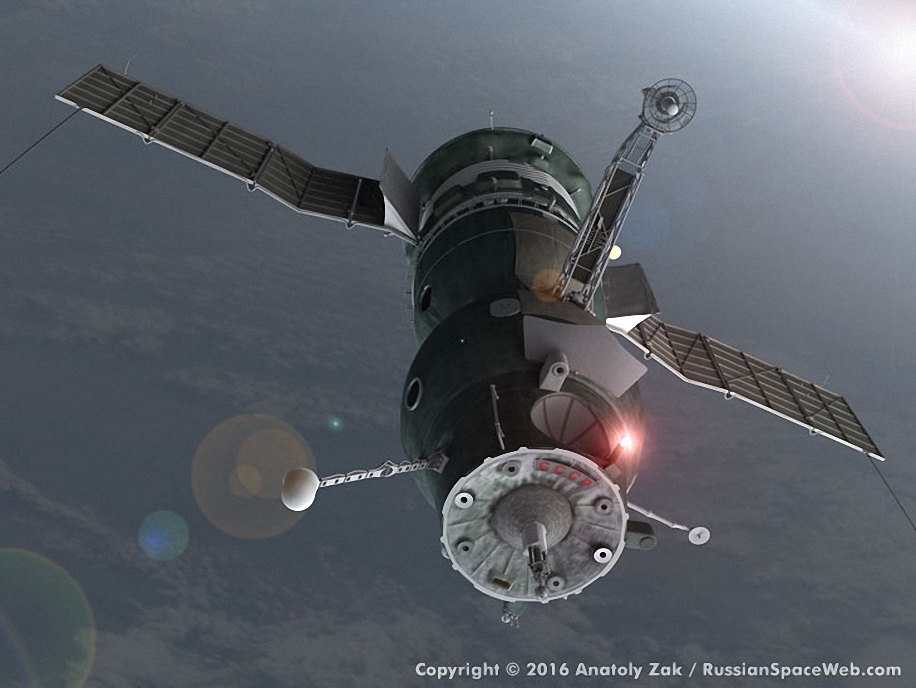
The first unmanned test, disguised under the name Kosmos-133, took place at the end of November 1966. The flight plan included orbital rendezvous with another spacecraft. However, the second launch never occurred. Moreover, due to the intense engine work after separation from the carrier rocket, Kosmos-133 expended almost all of its fuel, which would have made the operation impossible. Returning the spacecraft to Earth was also impossible. Due to errors made during assembly, the phasing of commands to the control nozzles was confused. As a result, the spacecraft deviated from its intended trajectory. It had to be destroyed to avoid the risk of landing on Chinese territory.
The second test was even worse. The launch was scheduled for December 14, 1966, but technical problems forced a delay. Then as a result of failure of electric wiring the rocket exploded on the launch pad, claiming the lives of three people.
On February 9, 1967, the third test took place, known as Kosmos-140. Due to orientation system problems, the spacecraft again consumed too much fuel and could not fulfill its mission. Additionally, the heat shield on the reentry module was not installed in proper way, resulting in a burn-through during reentry. However, what proved fatal for Kosmos-140 was its significant deviation from the planned landing site: it landed on the frozen Aral Sea, broke through the ice, and sank. If there had been cosmonauts on board, they would have inevitably perished.
It was evident that 7K-OK was not yet ready to receive its first crew. However, on February 21, an extraordinary event occurred: during ground tests of the new Apollo spacecraft, a fire broke out, claiming the lives of three astronauts. The catastrophe dealt a serious blow to the American lunar program, causing significant public outcry. Soviet experts had little doubt that the first manned Apollo flight would likely be postponed until 1968.
Thus, the USSR obtained the long-awaited opportunity to reduce its lag behind the Americans. Therefore, the rulers in Kremlin demanded that the leadership of the space industry promptly launch the new spacecraft with a crew. The fact that 7K-OK had not yet completed any successful flights was disregarded.
The situation became even worse when it was decided to launch two 7K-OK spacecraft (Soyuz-1 and Soyuz-2) with one and three cosmonauts, respectively. They were supposed to perform the world’s first manned docking in Earth’s orbit. Later, two members of the second spacecraft’s crew were to perform a spacewalk, transfer to the first spacecraft, and return to Earth with it.
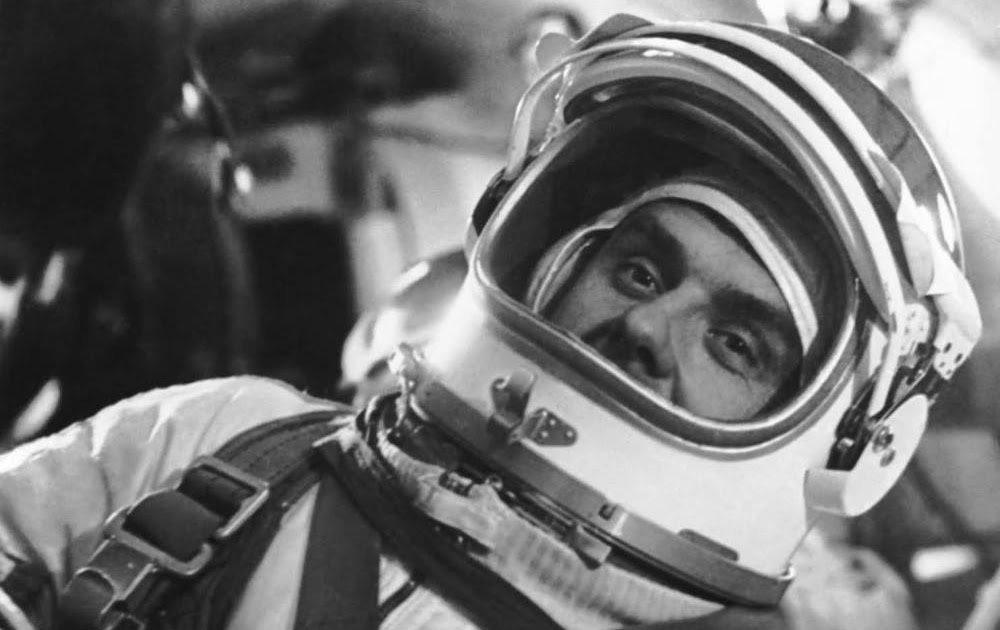
Vladimir Komarov was assigned as the pilot of Soyuz-1. He had already flown to space as part of the Voskhod-1 crew. In 1965, he began preparing for the new spacecraft’s tests and thoroughly studied its structure. Yuri Gagarin was Komarov’s backup. As General Nikolai Kamanin (organizer and head of the training of the first Soviet cosmonauts) later recalled, if Sergei Korolev had not passed away in January 1966, he would most likely have appointed Gagarin as the main pilot of the first Soyuz.
The crew of Soyuz-2 included Valery Bykovsky, Alexei Yeliseyev, and Yevgeny Khrunov. After docking in orbit, the last two were supposed to transfer to Soyuz-1 and return to Earth with Komarov.

The first Soyuz was launched on April 23, 1967. Technical problems emerged almost immediately. At first, one of the solar panels on the spacecraft did not deploy, preventing the deployment of the duplicate telemetry antenna and the protective shroud covering the star sensor. As a result, the spacecraft lost the ability to navigate by the stars and the Sun. Because of this, the mission control decided to cancel the launch of Soyuz-2, which saved the lives of Khrunov and Yeliseyev, and probably Bykovsky. As for Komarov, his flight was terminated prematurely, and he had to urgently return to Earth.
However, it was not an easy task. Since the automatic orientation system was not functioning, Komarov had to manually orient the Soyuz to initiate braking over the designated area. So, the spacecraft entered Earth’s atmosphere. It seemed that the most challenging part was behind. However, at an altitude of seven kilometers, the extraction parachute of Soyuz failed to pull out the main parachute from its container. At an altitude of 1.5 kilometers, the emergency automation system activated, but the cords of both parachutes became entangled. As a result, the descent capsule crashed into the ground at a speed of approximately 60 m/s. There was no chance of rescuing the cosmonaut. After the impact, a fire broke out. Hydrogen peroxide, leaking from ruptured tanks, intensified the fire, literally melting what remained of the spacecraft.
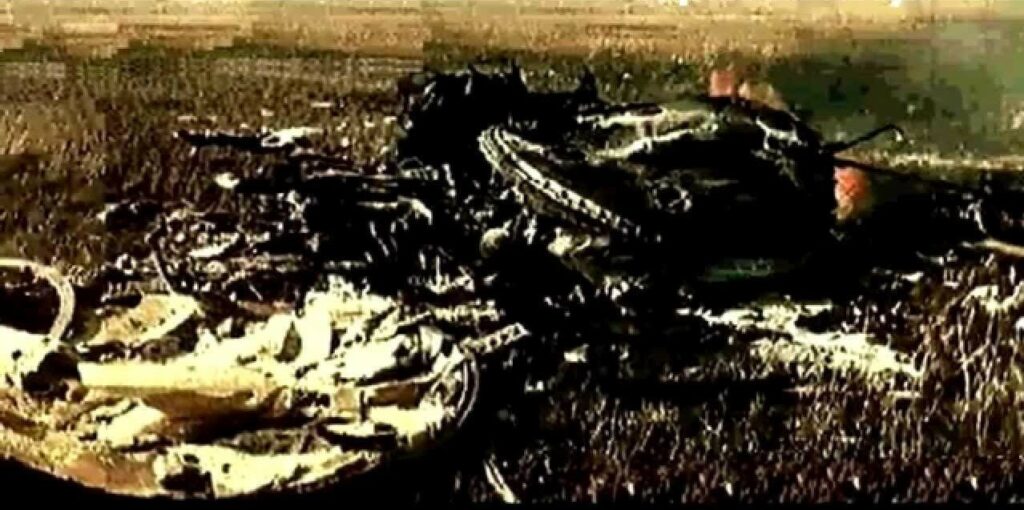
The investigation into the Soyuz-1 disaster revealed that the main parachute did not deploy because the force required to deploy it was greater than anticipated. However, the exact cause of this remains a subject of debate. According to the most widespread version, there was a violation of the thermal treatment technology of the landing module, causing the parachute to become stuck to the inner surface of the container. Another assumption suggests that the pressure inside the spacecraft exceeded the pressure in the container, causing it to deform and leading to the jamming of the main parachute. However, it is likely that we will never receive a precise answer to this question.
It is said that Komarov, realizing he would die, began to curse the spacecraft’s designers and the communist party over the radio for condemning him to death. However, this is not confirmed by either radio recordings or eyewitness accounts, nor by simple arithmetic — the time between the expected opening of the main parachute dome and the impact of the descent module on the ground was measured in seconds. Perhaps the cosmonaut did not even have time to comprehend what had happened.
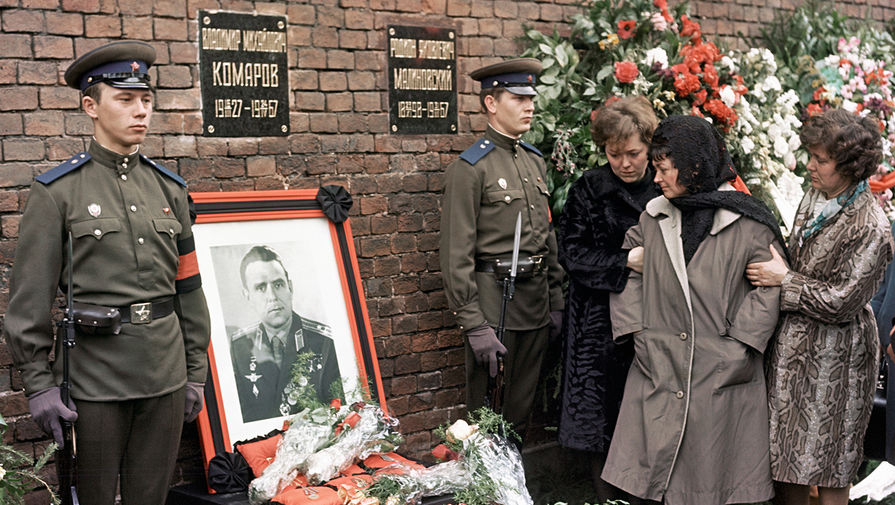
The loss of Soyuz-1 put an end to the USSR’s hopes of winning the first stage of the Moon race. In December 1968, Soviet cosmonauts wrote a letter to the Kremlin requesting permission to carry out a lunar flyby using the 7K-L1 spacecraft. But fearing a repeat of the Komarov tragedy, the Soviet government refused. The first circumlunar flight was accomplished by the crew of the Apollo-8 spacecraft.
Following the investigation of the Soyuz-1 disaster, modifications were made to the spacecraft’s parachute system. Changes were made to the technology of painting and applying thermal protection, and the containers were given the ability to expand, their wall thickness was increased. Six unmanned tests were conducted to ensure the safety of the spacecraft. Only after these tests was a new manned flight undertaken, and this time it was successful.
“Impossible” Disaster
The 7K-OK spacecraft became the main workhorse of Soviet cosmonautics from 1968 to 1970. Eight manned flights took place during this period. During these missions, astronauts primarily practiced orbital docking operations. Additionally, the first experiment studying the effects of prolonged (18-day) exposure to weightlessness on the human body was conducted.
Not all missions were successful. Two out of three planned dockings failed (the first due to a cosmonaut’s mistake, the second due to an automation failure). During the return to Earth, Soyuz-5’s pyrotechnic device failed to fire, and the instrument assembly section did not separate from the descent module. As a result, it entered the atmosphere on an abnormal trajectory with significant overloads. As a result cosmonaut Boris Volynov sustained injuries.
In the early 1970s, the USSR began implementing a program to create long-term manned orbital stations. A new modification of the Soyuz spacecraft with the index 7K-T was designed to transport crews to these stations. It received additional communication systems and a docking adapter that allowed astronauts to transfer to the station without a spacesuit. The latter circumstance proved to be critically important. 7K-T was designed for a crew of three, but due to the limited space inside the living capsule, they could only fit wearing lightweight non-sealed suits.
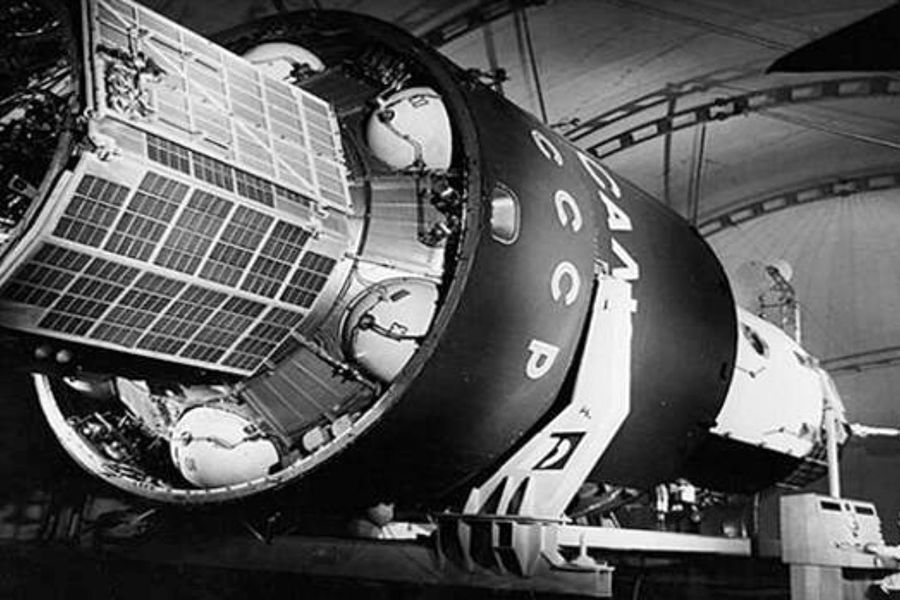
At that time, this was standard practice for Soviet spaceflight. The crew of Voskhod-1 was the first to venture into space without sealed suits. The successful outcome of this flight convinced the designers of the Soyuz of the safety of this approach. Furthermore, by abandoning the use of spacesuits, approximately 80 kg of weight could be saved.
As a result, during launch and reentry, the crew remained inside the descent module in regular jumpsuits. For missions requiring spacewalks, astronauts put on their spacesuits inside the orbital module (which also served as an airlock). Subsequently, to achieve even greater weight savings, inflation bladders were removed from the Soyuz capsule.
It’s worth noting that many astronauts and engineers considered this decision fundamentally flawed and repeatedly demanded a review of this dangerous practice. However, they were consistently denied. Vasyl Mishin, who was then the Chief Designer, once stated that the authors of such appeals were “overcautious,” and that depressurization of the Soyuz spacecraft was impossible in principle.
Therefore, after two unmanned tests of the new spacecraft modification, Soyuz-10 was launched into space. Its crew was supposed to dock with the orbital station Salyut-1. However, the first attempt ended in failure. Due to damage to the docking mechanism, the three cosmonauts were unable to board the station, so they eventually had to return to Earth.
The crew of Soyuz-11 made a second attempt to reach Salyut-1, consisting of Alexey Leonov, Valery Kubasov, and Peter Kolodin. But shortly before the launch, something unexpected happened. While examining an X-ray image of Kubasov’s lungs, medical experts noticed a small spot and decided to remove him from the flight, suspecting tuberculosis (later it turned out to be an allergy to a local plant). As a result, the crew was replaced with a backup crew consisting of Georgi Dobrovolsky, Vladislav Volkov, and Viktor Patsayev. According to the participants’ recollections, Leonov and his team took the removal from the flight very hard and did not hide their negative emotions. Little did they know that this “swap” would save their lives.
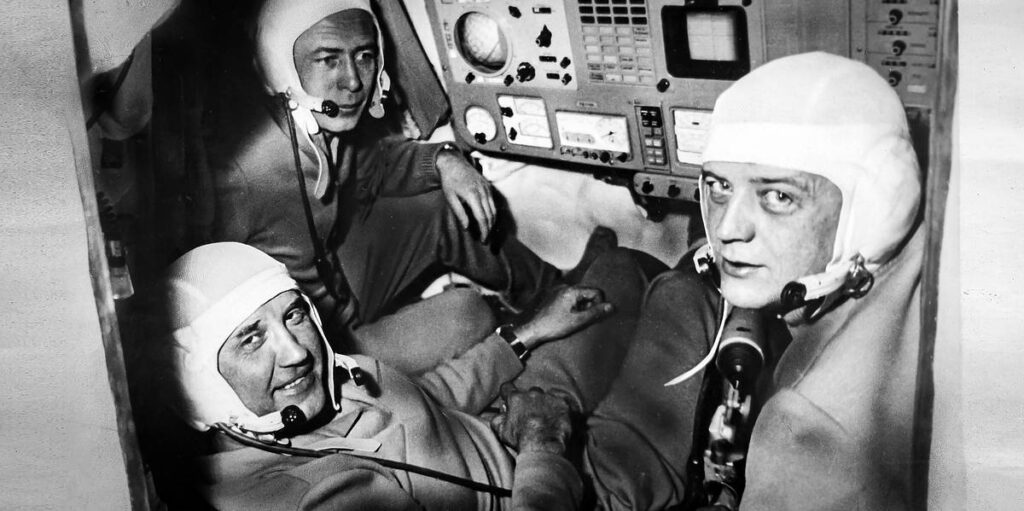
Soyuz-11 was launched on June 6, 1971, and successfully docked with Salyut-1, where the three cosmonauts spent 22 days on board the station. However, they almost had to terminate the mission prematurely due to a fire, but the problem was eventually resolved.
On June 29, Soyuz-11 undocked from the station, and the next day it performed a braking maneuver and re-entered the Earth’s atmosphere. After the separation of the orbital and instrument modules, the crew did not establish communication at the designated time. Since the descent module had no telemetry system, the Flight Control Center knew nothing about the condition of the cosmonauts. However, experts hoped that the problem was related to a radio communication failure.
The Soyuz-11 descent module landed as planned. When the search and rescue team reached it, they found no external damage. Upon opening the capsule, rescuers discovered that all three cosmonauts showed no signs of life. Attempts at resuscitation were in vain. Autopsies revealed signs of bleeding in the brain, blood in the lungs, ruptured eardrums, and nitrogen release from the blood, indicating decompression sickness.
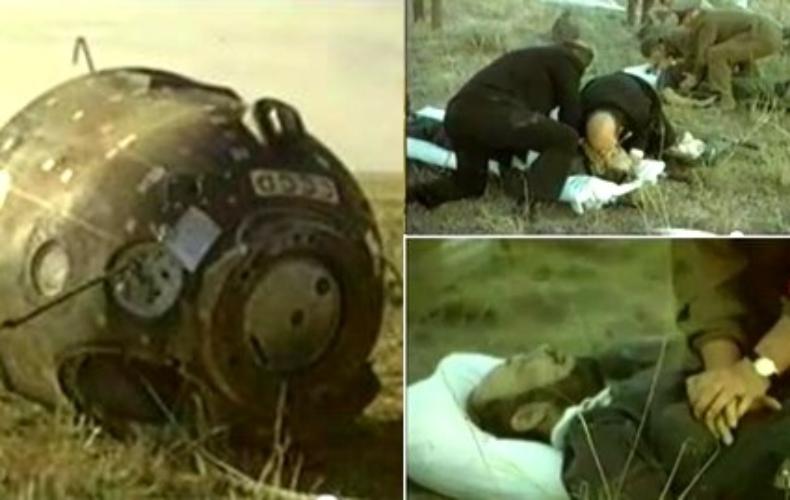
Further investigation revealed that after separating from the instrument module at an altitude of 150 km, the pressure in the descent module began to drop sharply, reaching almost zero after 115 seconds. Engineers soon conducted an experiment. They closed the hatch and all other standard openings in the spacecraft’s hull, creating pressure in the capsule higher than atmospheric pressure, and found no signs of leakage. It became clear that the pressure loss could only have occurred if one of the two ventilation valves in Soyuz-11 had activated. These valves automatically open at an altitude of 4 km to equalize the onboard atmospheric pressure with the pressure in the descent module.
But what caused the premature opening of the valve? According to the recollections of Alexey Leonov, he didn’t trust the automation of the new spacecraft and advised the Soyuz-11 crew to manually close the valves between the descent module and the instrument module before launch. However, it seems that the cosmonauts either forgot or disregarded his words.
During the investigation, a theory was put forward that the valve opened due to premature activation of the pyrotechnic device, caused by shockwave generated by the separation of the instrument module. However, despite numerous ground tests, this situation could not be reproduced. Nevertheless, as there were no alternatives, this version was recognized as the primary explanation. To this day, it is believed that the Soyuz-11 crew perished due to a coincidental combination of several unlikely factors.
It’s worth noting that the astronauts fought to the very end. Analysis of the onboard recorder data, the positions of their bodies, and the state of the spacecraft systems allowed experts to reconstruct the probable sequence of events in the crew’s final moments. After the depressurization began, Volkov and Patsayev turned off equipment whose noise made it difficult to locate the air leak, while Dobrovolsky checked the hatch’s integrity. They probably realized that the issue was with the ventilation valve. However, in the extreme conditions of the fog that filled the cabin after depressurization, severe pain throughout their bodies due to acute decompression sickness, and rapid hearing loss, the cosmonauts mistakenly closed the wrong valve. And there was no time left to correct that mistake.
Later, Alexey Leonov and Nikolai Rukavishnikov performed an experiment. It took them 52 seconds to manually close the ventilation valve. And this was with them already knowing what to do and performing the operation under normal conditions, without explosive decompression. Thus, the Soyuz-11 crew had virtually no chance of survival. The medical report concludes: “After 50 seconds from the separation of the instrument module, Pacaev’s breathing rate was 42 per minute, which is characteristic of acute oxygen starvation. Dobrovolsky’s pulse rapidly dropped, and his breathing stopped by this time. This is the initial period of death. On the 110th second after separation, no pulse or breathing was detected in all three. We believe that death occurred 120 seconds after separation.”
The loss of the Soyuz-11 crew led to the suspension of all manned flights in the USSR for 27 months. The spacecraft’s design underwent modifications. The layout of the control panel was changed to allow crew members to reach all the essential buttons and levers without getting up from their seats. It was also decided that astronauts must wear spacesuits during launch and re-entry. As a result, the crew of Soyuz spacecraft was reduced to two people. Flights with three astronauts resumed only in 1980, with the introduction of the new Soyuz-T modification.

Of course, even after this incident, there were still dangerous situations involving Soyuz spacecraft, but none of them ever resulted in the loss of astronauts. Commemorating the crews of Soyuz-1 and Soyuz-11, monuments were erected, streets in many cities were named after them, as well as asteroids and craters on celestial bodies. The most unusual memorial appeared on the Moon. The Apollo 15 mission crew placed an aluminum figurine depicting a person in a spacesuit on the lunar surface. Next to it was a plaque with the names of 14 astronauts and cosmonauts who had died by that time. Among them were Georgi Dobrovolsky, Viktor Patsayev, Vladislav Volkov, and Vladimir Komarov.

